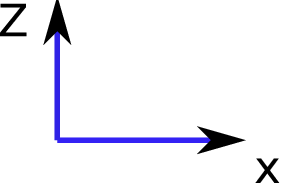 |
||||||||
 |
 |
 |
 |
|||||
 |
||||||||
 |
||||||||
 |
 |
|||||||
 |
||||||||
 |
||||||||
 |
||||||||
 |
||||||||
 |
||||||||
BOUNDARY CONDITIONS FOR BEAMS IN BENDING
The following equation is the governing equation for dynamics of beam with Euler-Bernoulliâs assumption, in which w is the transverse displacement, x is the coordinate along the beam axis, m is mass per unit of length, EI is the bending stiffness and q(x, t) is applied distributed transverse load.
Classification of Boundary Conditions
Geometric Boundary Conditions
Boundary conditions that describe displacement and slope are called geometric boundary conditions and boundary conditions that describe force and moments are called natural boundary conditions. This classification will become useful in the derivation of approximate solutions.
A geometric boundary condition can specify displacement (w) or slop (θ(x)) at each end of the beam. According to Euler-Bernoulli beam theory, θ(x = x0) = ⎛⎝(∂w)/(∂x)⎞⎠x = x0. In beam theory which accounts for shear deformation, such as Timoshenkoâs theory, this equality is not correct any more. Throughout this page, the Euler-Bernoulli beam theory is assumed. For example in a clamped-free beam (Fig. 1↓), at the clamped end both displacement and slope are known and are equal to zero; hence, one can apply w = 0,⎛⎝(∂w)/(∂x)⎞⎠x = x0 = 0 at the clamped end of the beam.
Natural Boundary Conditions
A natural boundary condition is a boundary condition on the force or moment. Therefore, if forces and moments are known then one can specify a boundary conditions based on them. In the example of clamped-free beam, at the free end, both force and moment are zero. In many situations, the natural boundary condition is not as easy as this. A beam reinforced by a rotational or translational spring, a lumped point mass, or a rigid body should be prescribed by a natural boundary condition. In Euler Bernoulliâs theory force and moment are related to displacement via the following equations
(1)
M
= EI(∂2w)/(∂x2)
F
= − (∂M)/(∂x) = − (∂)/(∂x)⎛⎝EI(∂2w)/(∂x2)⎞⎠
For further illustration of the boundary conditions, please refer to the Examples section.
